Tengboche Monastery is a spiritual and cultural pride of the Himalayas. It is located in the Khumbu region of Nepal. This holy site of Tibetan Buddhism lies at an altitude of 3,867 metres and offers some stunning, breathtaking, and panoramic views of the mightiest peaks of Mount Everest and Ama Dablam. It was established in 1916 by Lama Gulu, and it is an important religious site for the Sherpas. Tengboche is also featured on the map as one of the vital trailheads for the Everest Base Camp trek.
Quick Details About Tengboche Monastery
Best Time To Visit: October to November
Tengboche Monastery Address: Tengboche village in Khumjung in the Khumbu region of eastern Nepal
Timings: 7 AM – 5 PM
Nearest Airport: Lukla Airport (also known as Tenzing-Hillary Airport), located approximately 30 kilometers away
Nearest Bus Stand: Namche Bazaar, approximately 10 kilometers away
Entry Charges: Free
How to Reach Tengboche Monastery
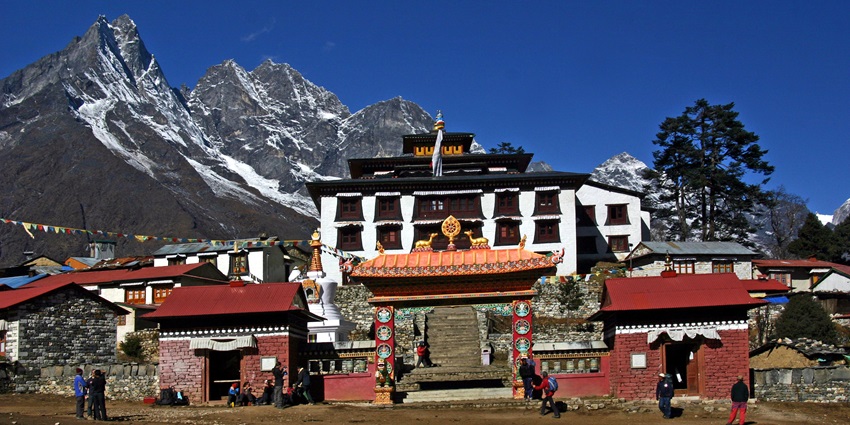
Photo: Gerd Eichmann / Wikimedia Commons
Tengboche Monastery can be conveniently reached by air, bus, and rail, making it a popular choice for travellers arriving in Nepal.
By Air: The nearest airport to the monastery is the Lukla Airport and visitors can hire a taxi from there.
By Bus: Local buses offer a budget-friendly, comfortable, and time-efficient way to travel from Lukla or Kathmandu to the monastery.
By Train: Nautanwa Railway Station is the nearest railway station to the monastery. From here, tourists can travel by bus or taxi to Tengboche village.
Suggested Read: Bungee Jumping In Nepal
Places To Visit Around Tengboche Monastery
Tengboche Monastery and its surroundings offer a variety of attractions beyond its landscapes. Here’s a list of places to visit around the monastery:
1. Namche Bazaar
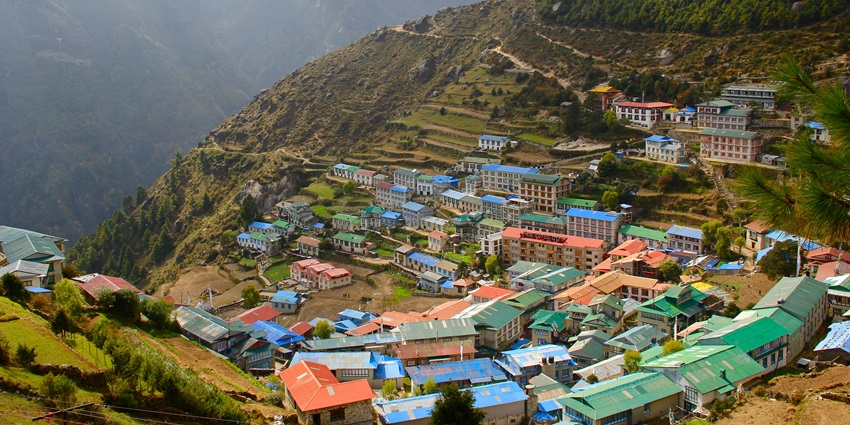
Photo: Kalle Kortelainen / Unsplash
Namche Bazaar is the district administrative headquarters in the Khumbu region of Nepal. It is a large mountain town with a sea of colourful lodges perched on the side of a hill, offering great views of surrounding peaks. Namche is considered the gateway to the Everest region and a vital acclimatisation spot for trekkers bound for Everest Base Camp. The town is known to amalgamate traditional Sherpa culture and modernity with its busy markets, warm lodges, and shops selling trekking gear. This place has recently developed into both a cultural hub and a haven for adventure enthusiasts.
Timings: 24*7
2. Kala Patthar
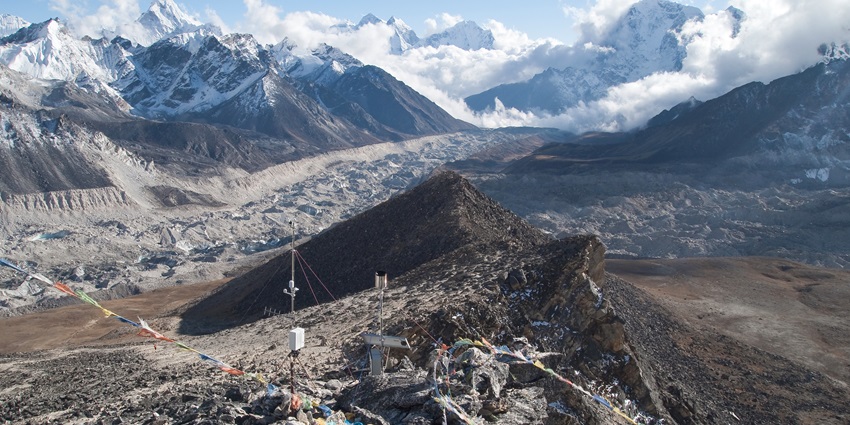
Photo: Vyacheslav Argenberg / Wikimedia Commons
Kala Patthar is one of the famous viewpoints of the Everest region in Nepal, standing at an altitude of 5,643 metres. Although it is not a mountain peak, it provides one of the more dramatic views of Mt. Everest, Nuptse, and Lhotse, as well as the other great giants that form the surrounding amphitheatre of the Himalayas. It is perched next to Gorak Shep. Khala Pattar is regarded as a holy set for trekkers to close up Everest, especially at sunrise or sunset, with its peaks casting golden light. The way to Kala Patthar is quite steep, but the fantastic views make it so rewarding.
Timings: 12 to 14 days trek
Suggested Read: https://tripxl.com/blog/bungee-jumping-in-nepal/
3. Everest Viewpoint
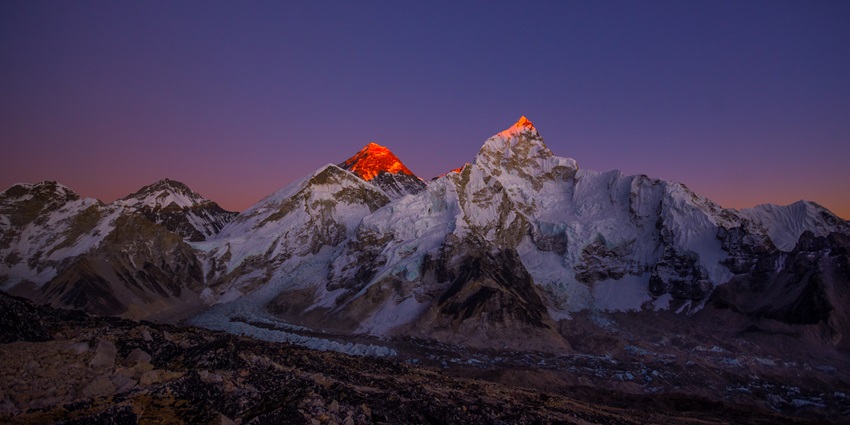
Photo: Nir B. Gurung / Wikimedia Commons
The view from Everest Viewpoint in Nepal offers trekkers and visitors one of the most unforgettable panoramas of the majestic Himalayas, inclusive of the iconic Mount Everest. This viewpoint is located inside the Sagarmatha National Park and is usually reached through the famous Kala Patthar trek near Gorak Shep. From here, tourists can view towering peaks that rise into the sky, like Lhotse, Nuptse, and Ama Dablam. The views at sunrise are breathtaking when golden rays peek into the mountains. The viewpoint of Mount Everest is much more than an epitome of the region’s natural beauty; it overwhelms one with awe and inspiration.
Timings: 24*7
4. Everest Base Camp
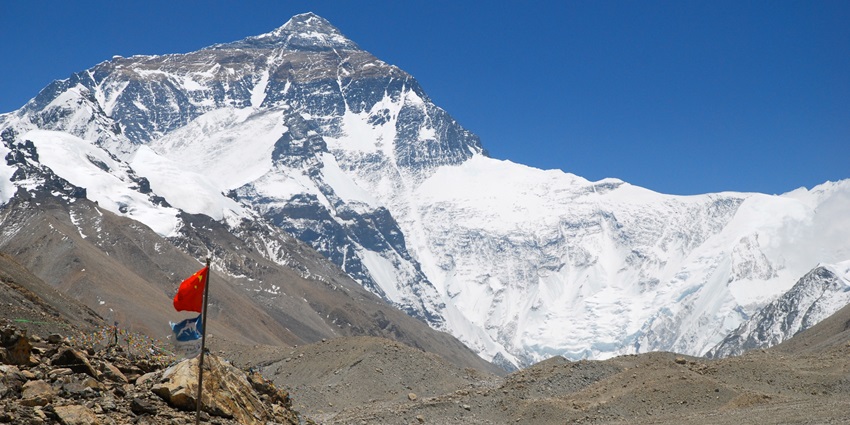
Photo: Gunther Hagleitner / Wikimedia Commons
Everest Base Camp is the launch pad from which climbers attempt to ascend to Mount Everest’s top. It is placed right in the middle of the Khumbu region. EBC turns into a paradise for trekkers, offering astounding views of some of the highest peaks in the world, including Everest itself. The trekkers will pass through scenic Sherpa villages, old monasteries, and rough landscapes, which end dramatically in this landscape of glaciers and towering mountains, ending up at EBC. Making it to the base camp of Everest is a once-in-a-lifetime adventure, symbolic of physical achievement and spiritual enlightenment.
Timings: 24*7
Suggested Read: Enjoy Trekking In Nepal
5. Sherpa Museum
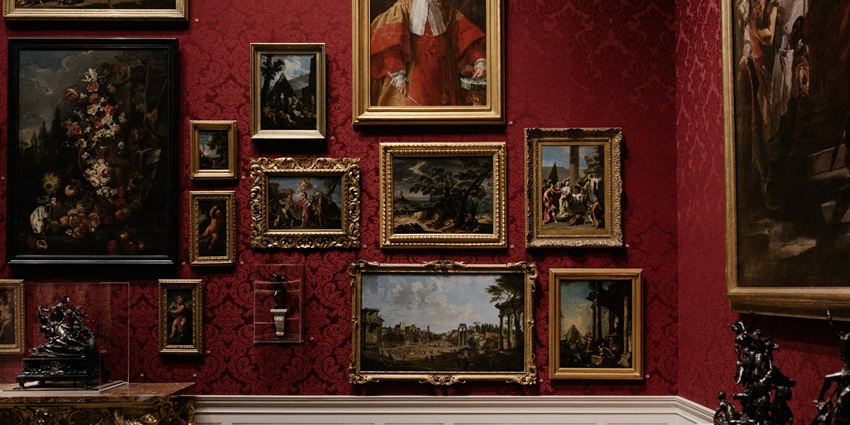
Photo: Andrew Neel / Unsplash / Image For Representation Only
The Sherpa Museum is situated in Namche Bazaar. It is a cultural treasure trove committed to the conservation and exhibition of the rich heritage of the Sherpas. It showcases in-depth the history, traditions, and daily life of the Sherpas, who are famous as mountaineers. Traditional costumes, several types of implements and tools, religious objects, and photographs documenting mountaineering activities in the region, including legendary expeditions to Mount Everest, are all on display here. With its informative displays and stunning location, the Sherpa Museum gives an in-depth appreciation of the Sherpas’ abiding connection with the Himalayas.
Timings: 8 AM – 4 PM
Entry Fee: ₹250
Where To Stay
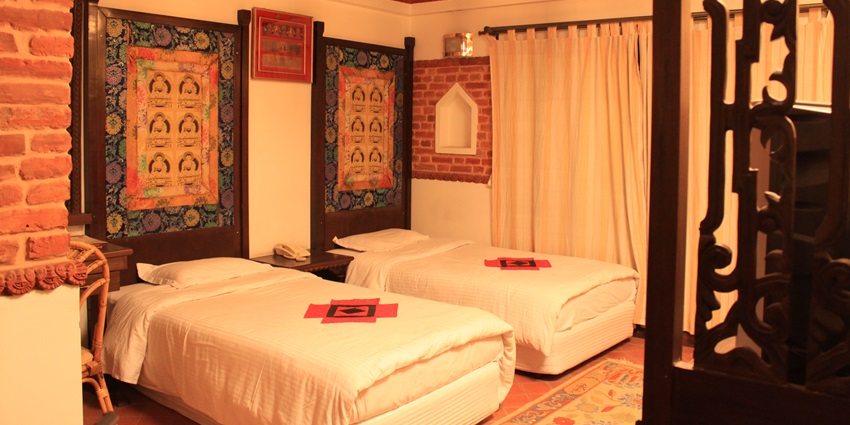
Photo: Mallaclassicroom / Wikimedia Commons / Image For Representation Only
Tengboche has many accommodation facilities near the monastery, which suit different budgets and tastes. Some recommended places to stay here are Trekkers Lodge, Tashi Delek Lodge, and Himalayan Hotel. For a good, hassle-free experience, ensure you book in advance while considering the proximity to the local attractions, dining options, and public transport, and check on travel websites or apps for current reviews.
Suggested Read: Skydiving In Pokhara
Where To Eat
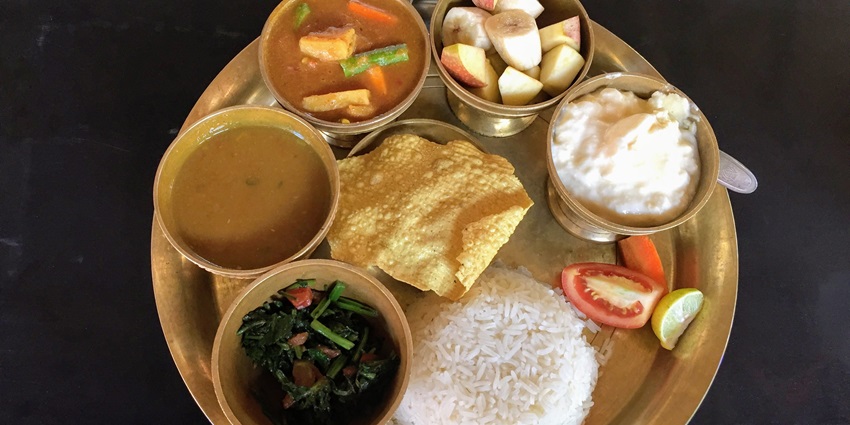
Photo: Subhashish Panigrahi / Wikimedia Commons / Image For Representation Only
You can enjoy savouring food at Cafe de Bosky, Pho 99, G Cafe, and Tashi Delek Restaurant. Visitors can taste local Nepali flavours by indulging in regional specialities.
Other Factors To Consider
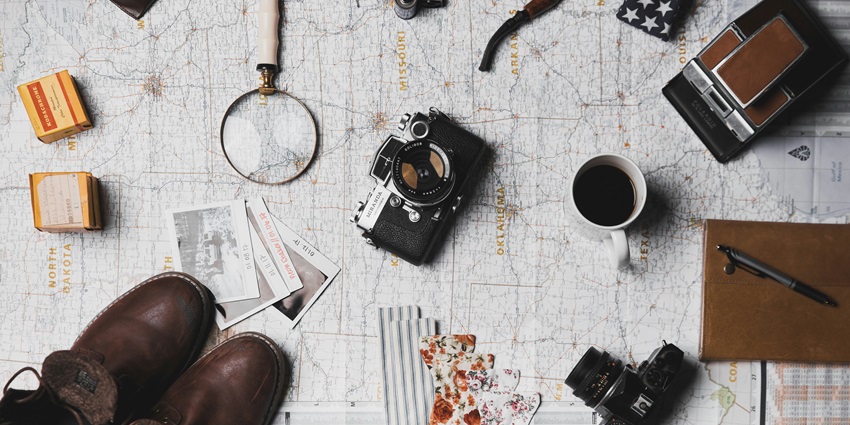
Photo: ian dooley / Unsplash / Image For Representation Only
Here are some factors to consider before you take a trip to Tengboche Monastery.
Average Cost Of The Trip
The trip cost to the monastery varies based on travel style, accommodation, dining, and activities. There is no entry fee at the monastery, however, costs may vary depending on other facilities. It can range anywhere between, ₹5000 to ₹10,000.
Tips For Travellers
- Do not litter in the temple complex.
- Dress modestly, and cover your shoulders and knees.
- Show due respect to the local customs and traditions.
- Ask for permission to click the Tengboche Monastery photos.
Suggested Read: Adventure Sports In Nepal For Every Adrenaline Junkie
Tengboche Monastery represents spiritual resiliency and cultural heritage. It remains a place for pilgrimage and introspection up to the present times due to the astounding surroundings and deep significance for the Sherpas. Tengboche has a great impression on visitors. This monastery is undoubtedly a serene and magnificent location. Book your next trip to the monastery with TripXL and get a chance to enjoy this beautiful location.
Cover Photo: Vitbaisa / Wikimedia Commons


 WhatsApp
WhatsApp
 Twitter
Twitter









